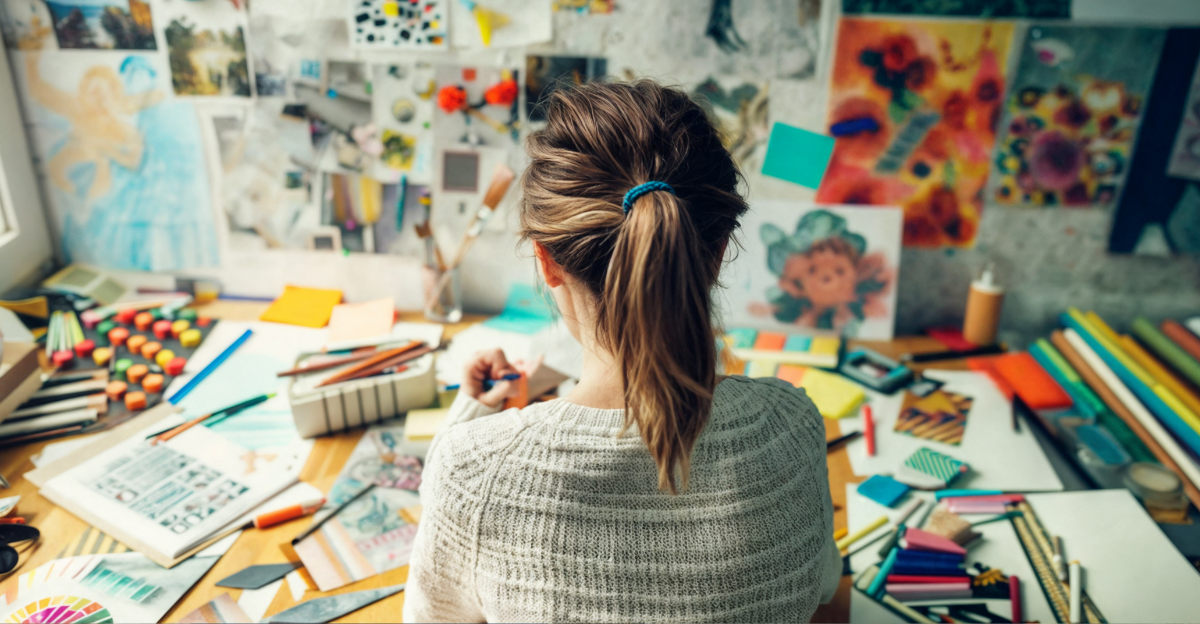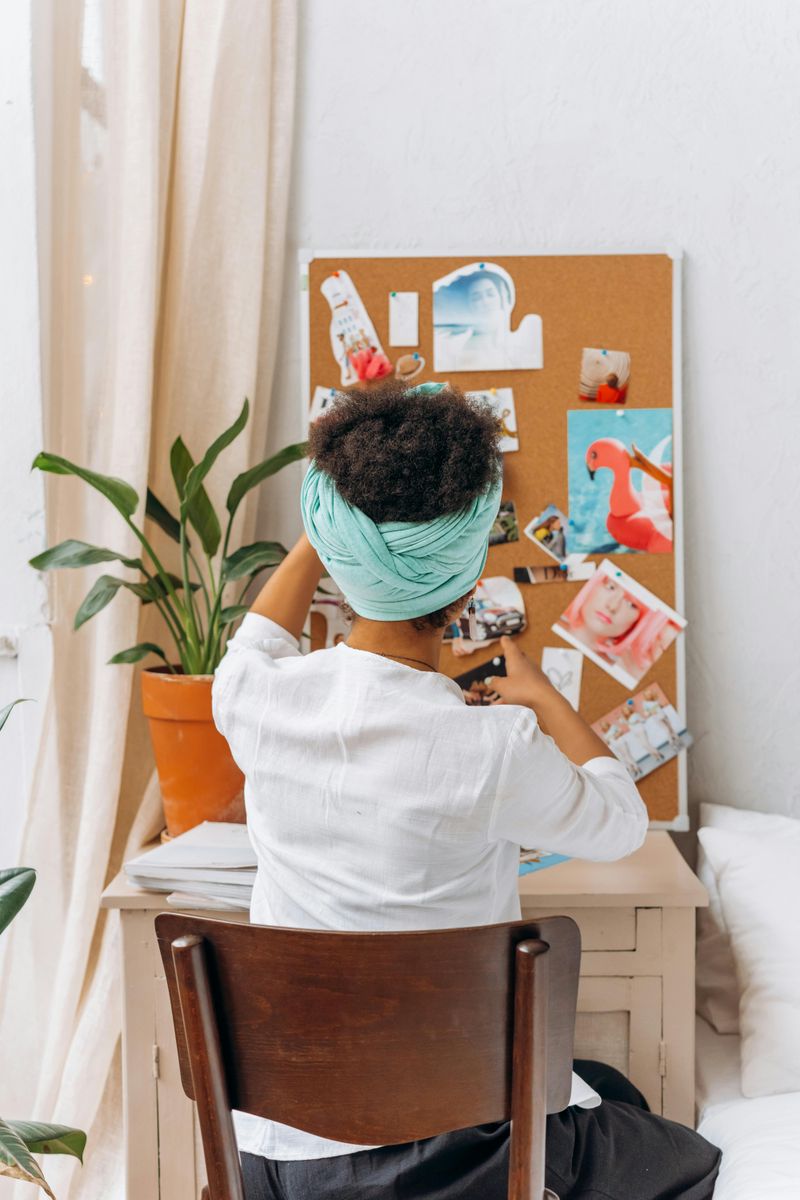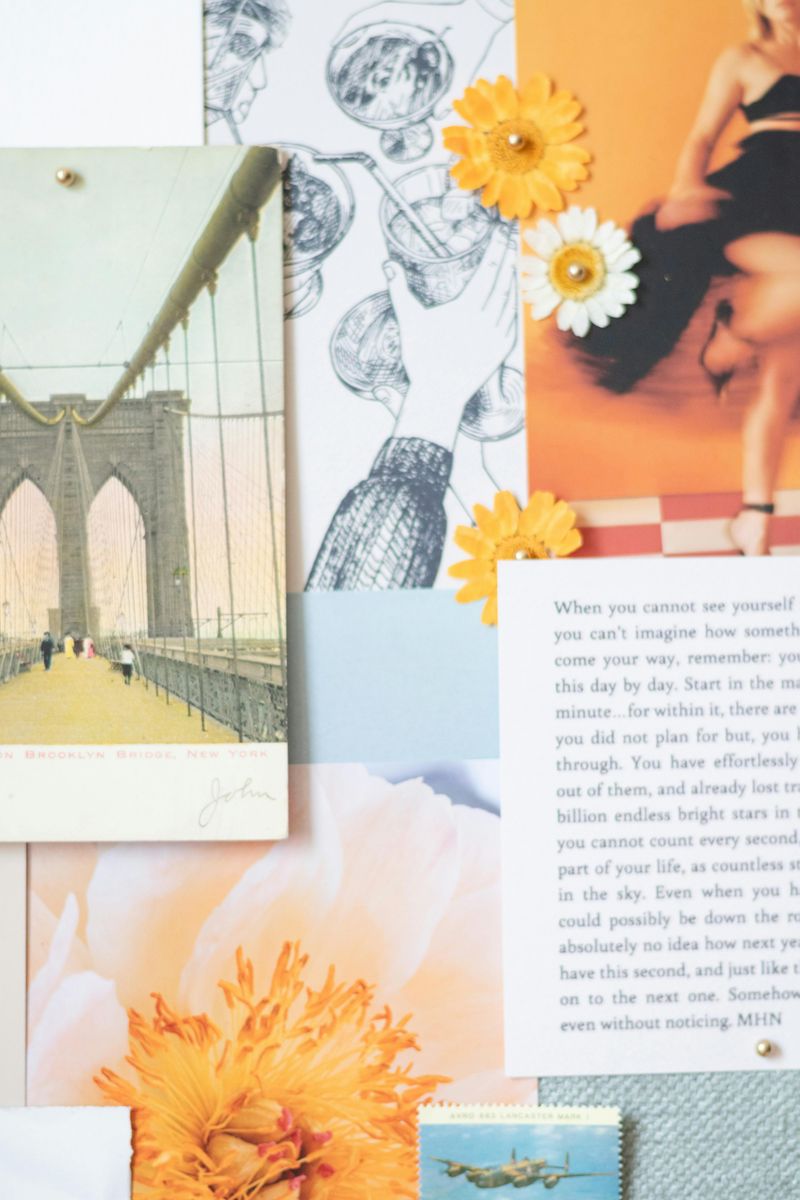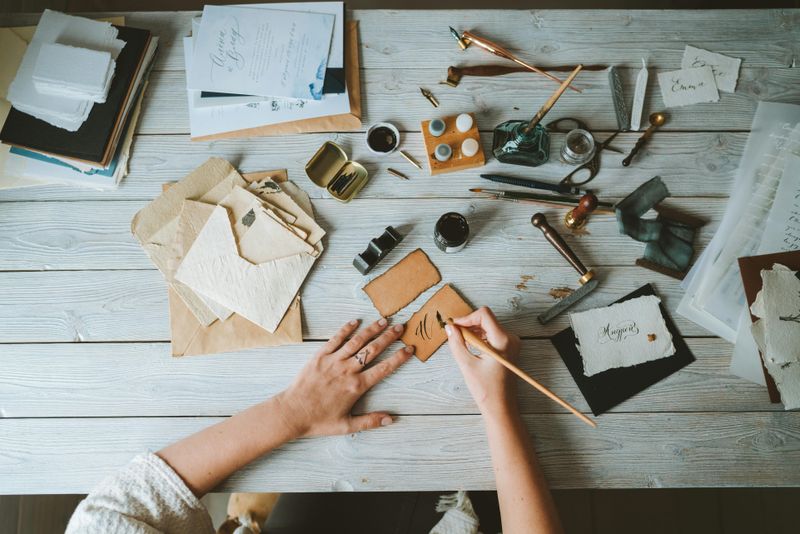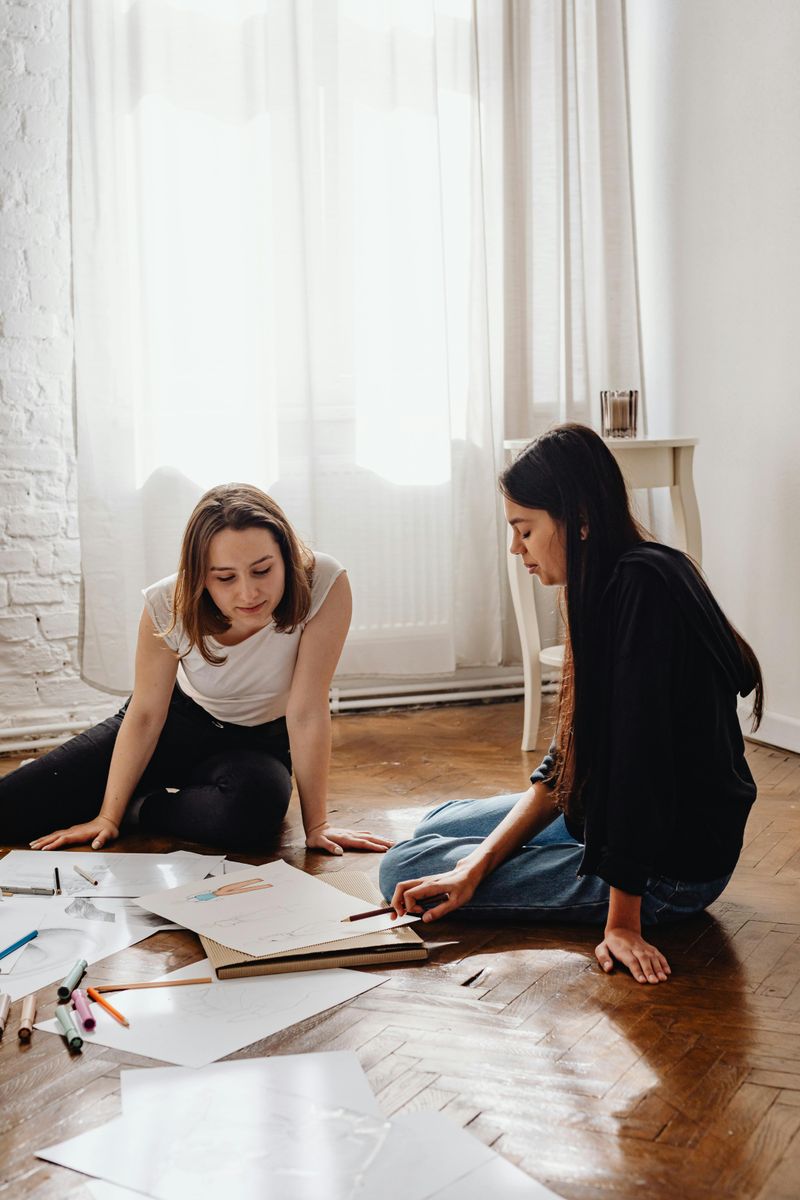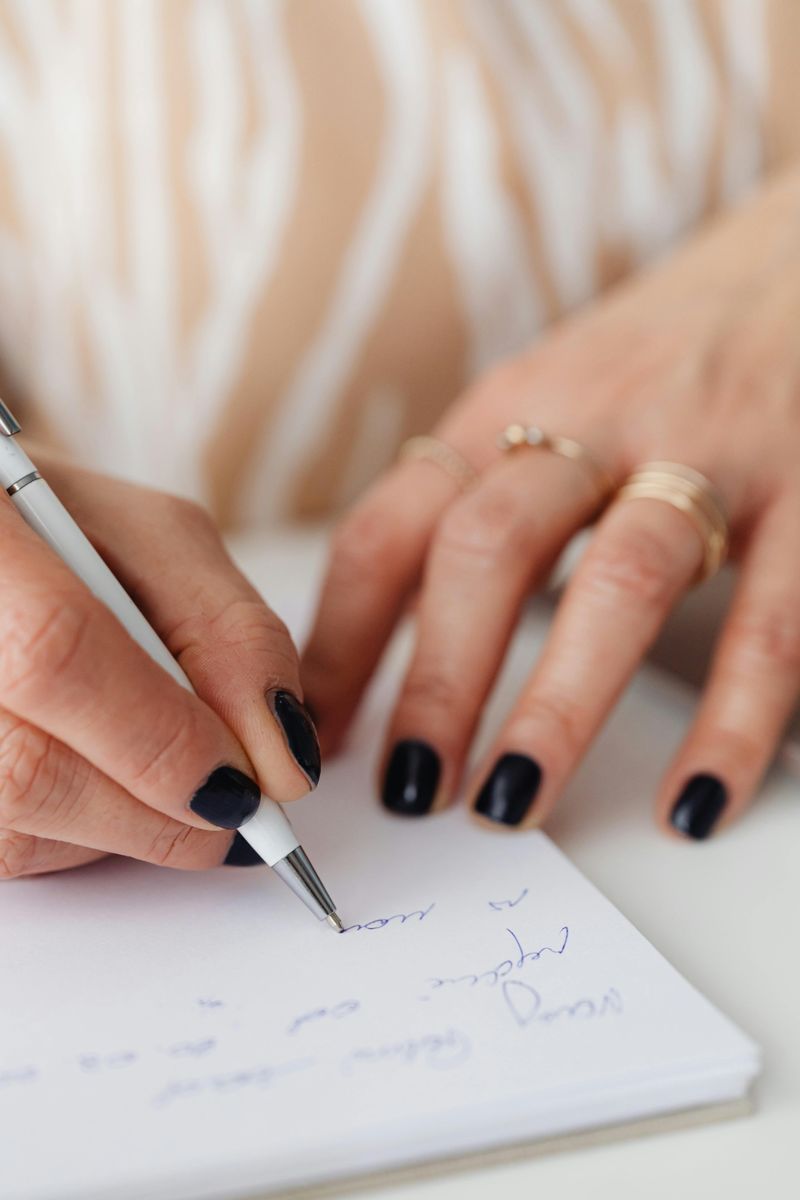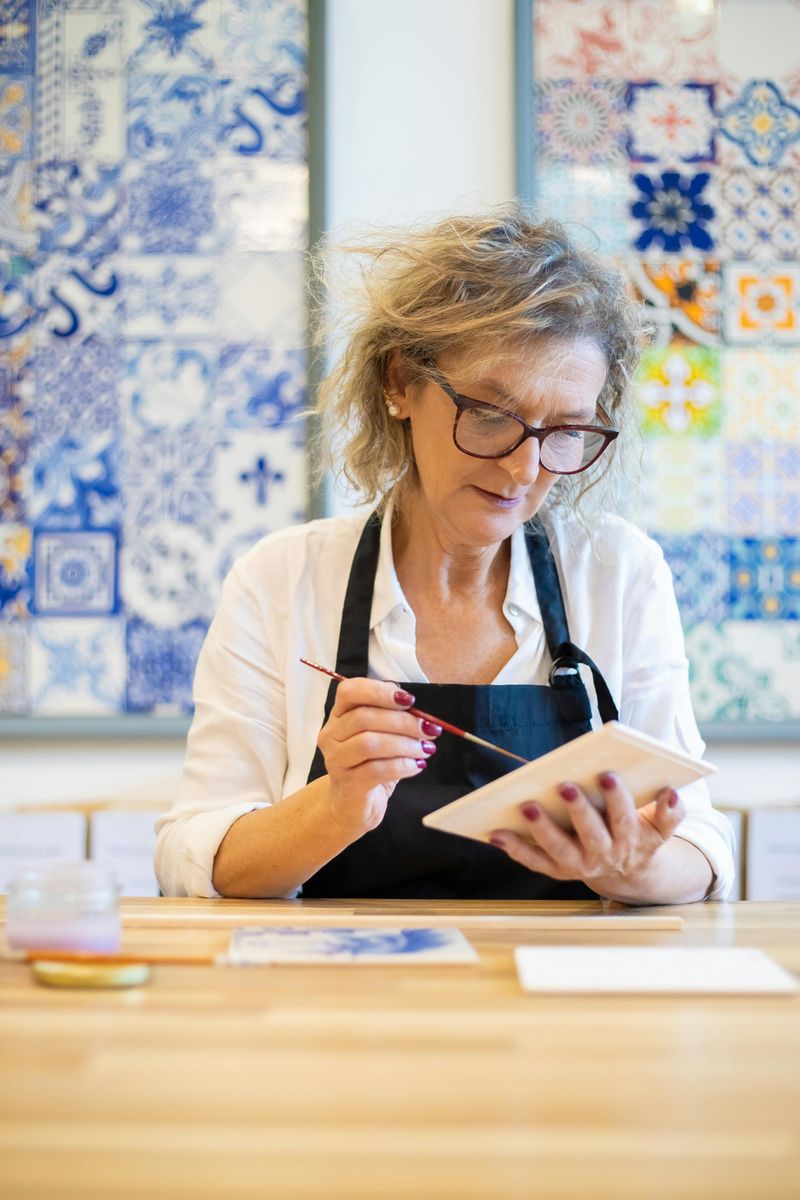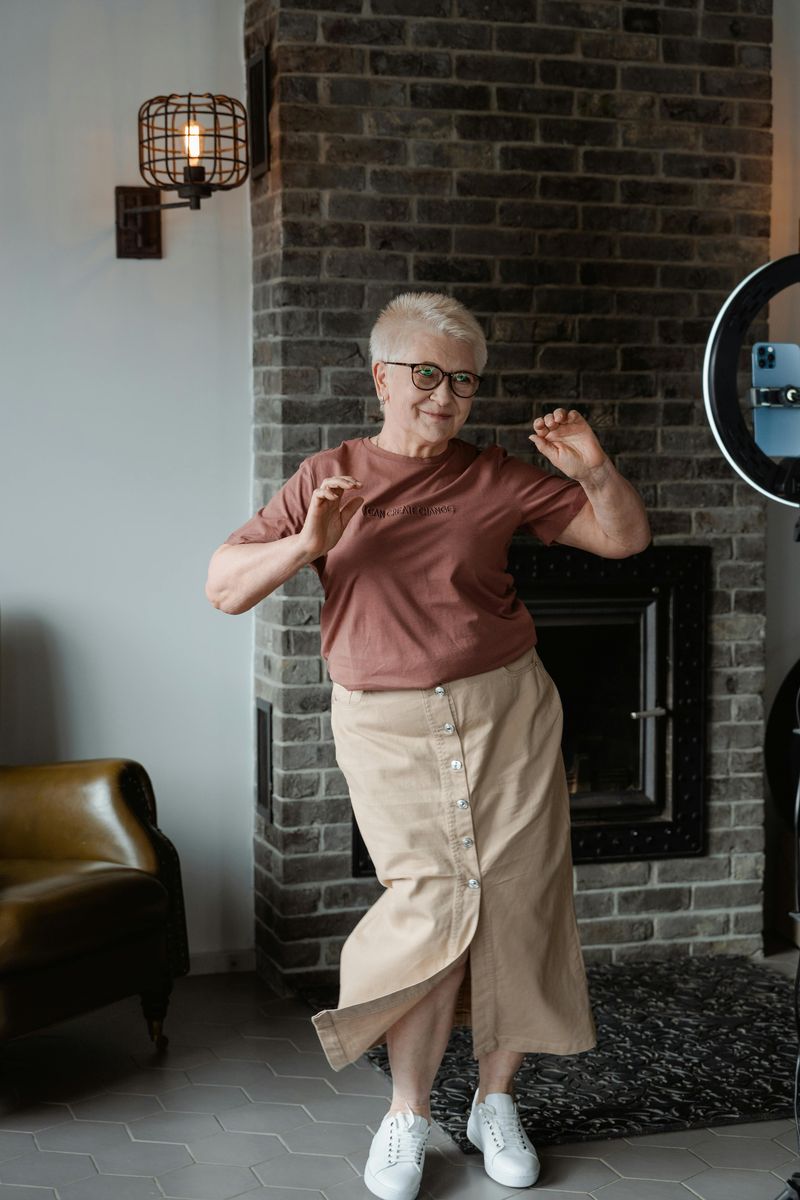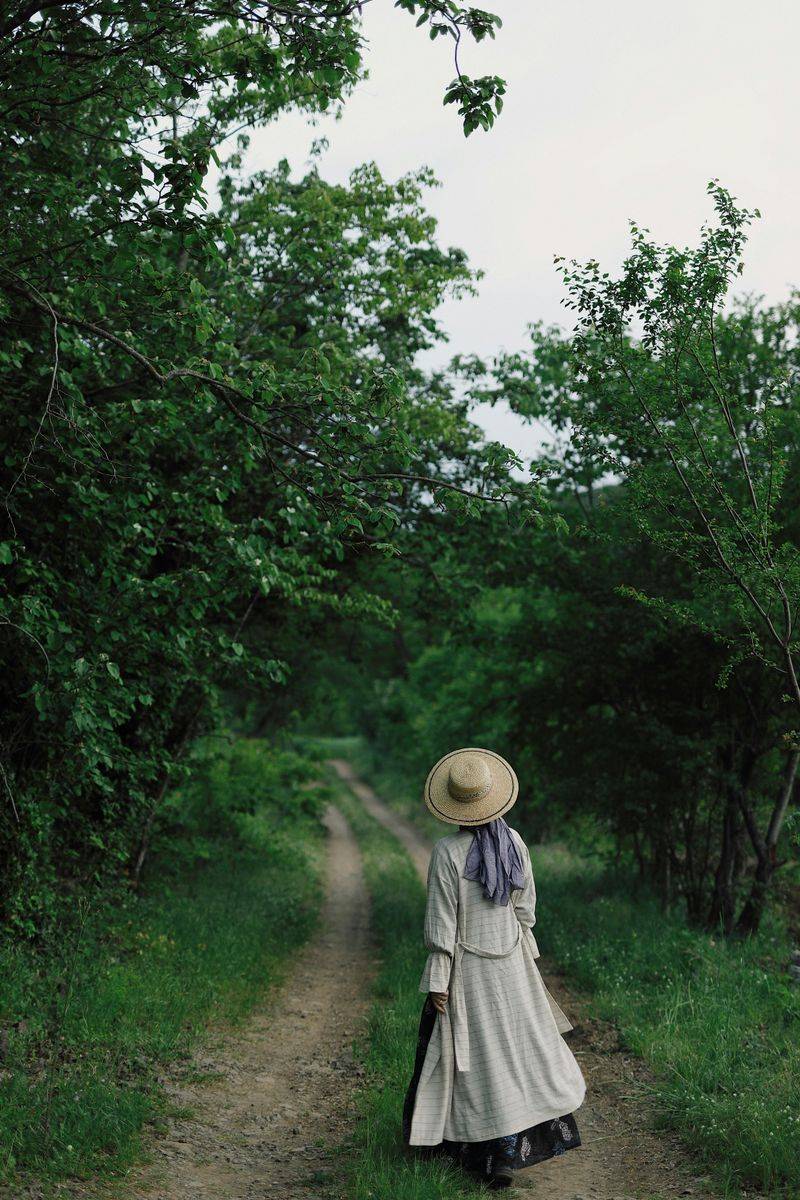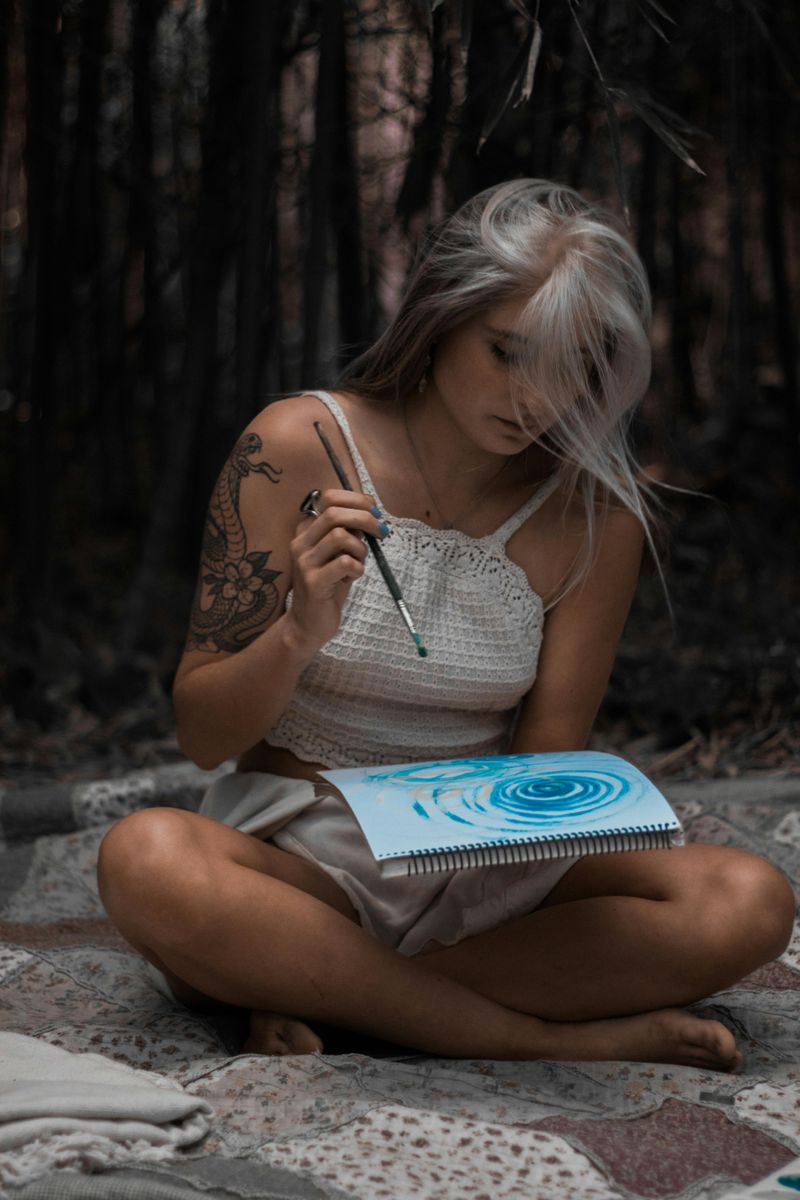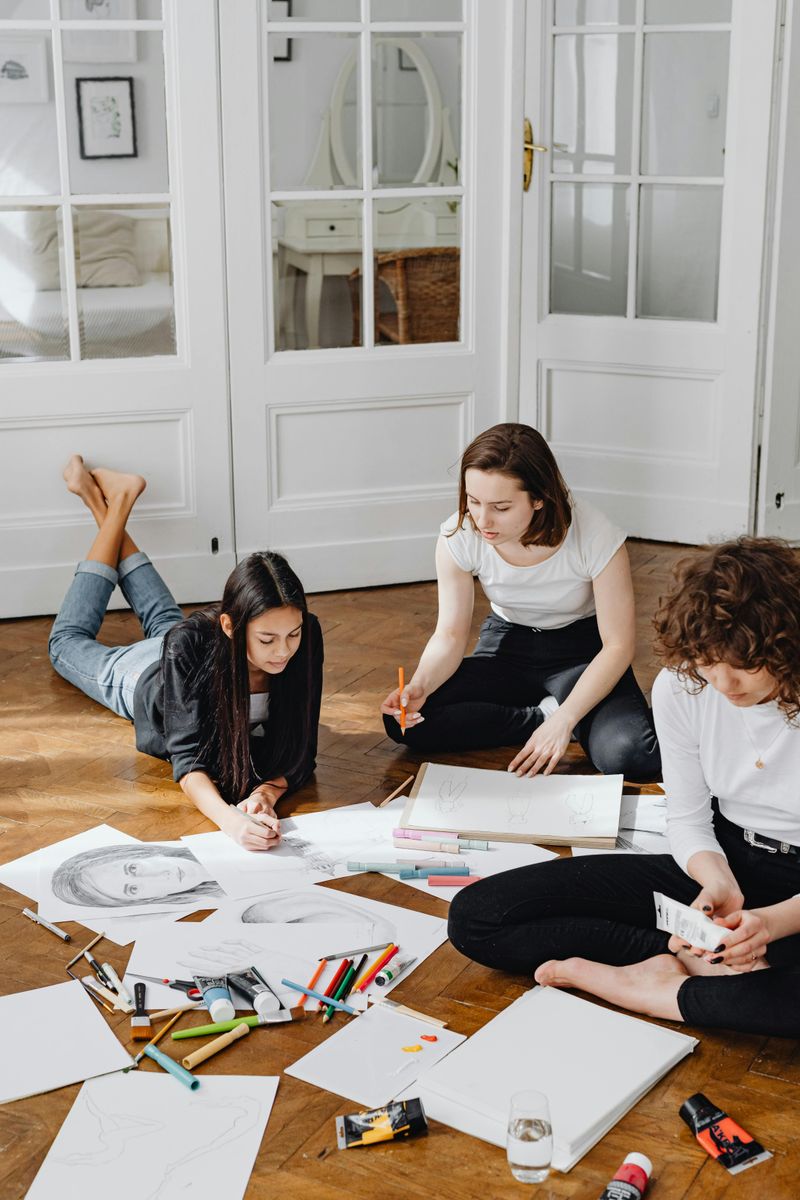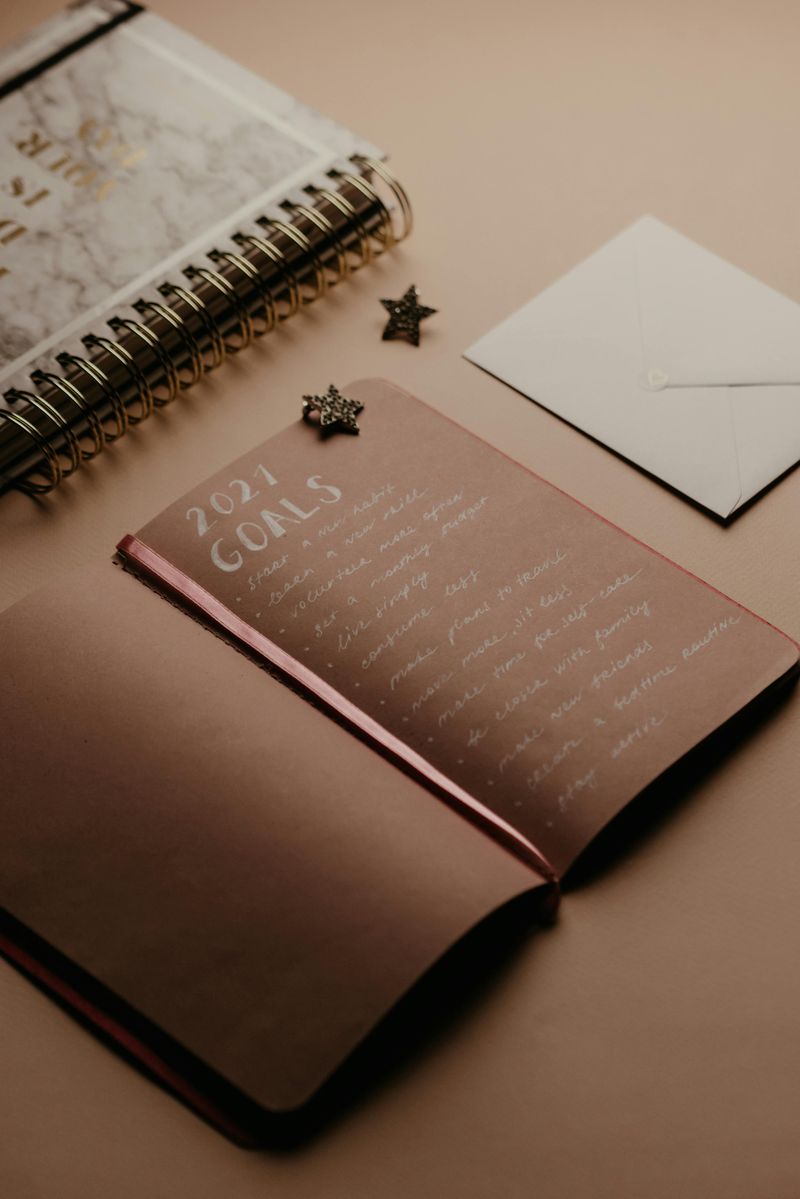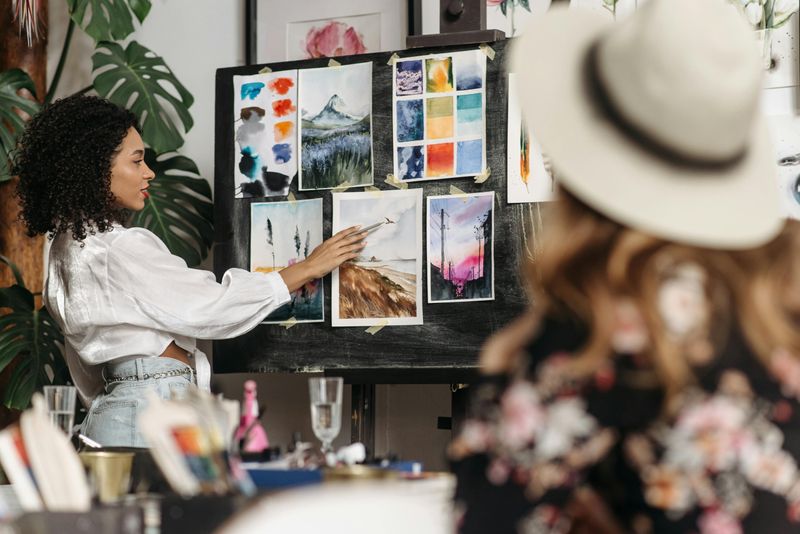Feeling stuck in a creative rut can be frustrating and discouraging. You might think your imagination has dried up completely, but the truth is that creativity never really disappears—it just needs a little spark to come back to life. Whether you’re an artist, writer, musician, or someone who simply enjoys creative hobbies, there are many ways to reignite that inner fire and rediscover the joy of making something new.
1. Start Mind Mapping Your Ideas
Mind mapping transforms scattered thoughts into visual connections that make sense. Instead of writing lists or paragraphs, you draw bubbles and branches that link related ideas together in surprising ways.
This technique helps your brain see patterns it might miss otherwise. Start with one word or concept in the center of a blank page, then let branches grow outward as new thoughts pop up.
Colors, doodles, and symbols make the process even more engaging. Before you know it, you’ll have a whole web of creative possibilities spread across your paper, revealing connections you never imagined existed.
2. Create a Collage from Random Materials
Collage-making gives your hands something to do while your mind wanders freely. Flip through old magazines, gather fabric scraps, collect ticket stubs, or print out interesting photos—anything that catches your eye works perfectly.
There’s no right or wrong way to arrange these pieces. The beauty lies in experimenting with different combinations until something feels right.
This playful approach removes the pressure of creating something perfect from scratch. You’re simply rearranging existing materials into something entirely new, which often sparks ideas for other creative projects you’ve been avoiding or hadn’t even considered yet.
3. Use Random Prompts for Inspiration
Random prompts push you outside your comfort zone in the best possible way. These can be single words, questions, images, or even strange combinations that force your brain to think differently.
Websites, apps, and books offer thousands of creative prompts designed to jumpstart your imagination. Pick one without overthinking it, then commit to exploring wherever it leads you for at least fifteen minutes.
Sometimes the weirdest prompts produce the most interesting results. A phrase like “purple elephants dancing underwater” might sound silly, but it could unlock a whole new direction for your creative work that you never would have discovered on your own.
4. Brainstorm with a Creative Friend
Two minds really are better than one when creativity feels stuck. Find someone who enjoys thinking outside the box and set up a casual brainstorming session without any specific goals or expectations.
Bounce ideas back and forth, build on each other’s suggestions, and laugh at the ridiculous ones. Sometimes the silliest concepts lead to genuine breakthroughs.
Your friend might see possibilities in your ideas that you completely missed. They bring their own experiences and perspectives, which can illuminate aspects of your creative work you’ve been too close to notice. Plus, their enthusiasm might reignite your own excitement about creating again.
5. Try Free Creative Writing Sessions
Free writing means putting pen to paper and not stopping for anything. No editing, no crossing out, no worrying about spelling or grammar—just pure, unfiltered thoughts flowing onto the page.
Set a timer for ten or fifteen minutes and keep your hand moving the entire time. Write whatever pops into your head, even if it’s “I don’t know what to write” repeated twenty times.
Eventually, something interesting will emerge from the mental clutter. This practice quiets your inner critic and lets your subconscious speak freely, often revealing creative ideas that were hiding beneath layers of self-doubt and overthinking all along.
6. Experiment with a New Art Form
Stepping into completely unfamiliar creative territory can refresh your entire perspective. If you usually write, try painting. If you paint, experiment with music or sculpture.
Being a beginner again reminds you that creativity involves playfulness and exploration, not just polished results. You’ll make mistakes, feel awkward, and probably create some truly terrible first attempts—and that’s exactly the point.
This beginner’s mindset often carries back into your usual creative work with renewed energy. You remember that creating should be fun and experimental, not stressful and perfectionistic. Plus, techniques from one art form frequently translate surprisingly well to another.
7. Listen to Music and Move Your Body
Music bypasses your logical brain and speaks directly to emotions and energy. Put on something that makes you want to move—whether that’s upbeat pop, classical symphonies, or anything in between—and let your body respond however it wants.
Dance around your room, sway gently, or just tap your feet. Physical movement shakes loose mental blocks and gets energy flowing through your entire system.
You might notice ideas popping up while you’re moving that never appeared while you were sitting and thinking hard. Your body holds creative wisdom too, and sometimes it just needs permission to express itself through movement before your mind can access fresh inspiration again.
8. Take a Walk in Nature
Nature has a magical way of clearing mental clutter and restoring creative energy. Leave your phone behind and simply walk through a park, forest, beach, or any green space near you.
Pay attention to small details: the pattern of bark on trees, how light filters through leaves, the sound of birds or wind. These observations often spark unexpected creative ideas.
Studies show that time outdoors actually changes your brain activity in ways that enhance creative thinking. Fresh air, natural light, and gentle exercise combine to refresh your mind. Many famous creators throughout history solved their biggest creative problems while walking outdoors, letting their subconscious work while their conscious mind rested.
9. Reflect on Your Creative Journey
Looking back at your creative history often reveals patterns and forgotten gems. Pull out old notebooks, sketchbooks, or project files and spend time reviewing what you’ve made before.
You might rediscover half-finished ideas that deserve another chance. Or you’ll notice themes that keep appearing in your work, suggesting directions worth exploring more deeply.
This reflection also reminds you how much you’ve already accomplished, which can boost confidence when you’re feeling stuck. Sometimes seeing how your style and skills have evolved over time reignites excitement about where you might go next. Past work contains seeds of future creativity waiting to be watered.
10. Collaborate on a Creative Project
Collaboration brings fresh perspectives and shared energy to creative work. Partner with someone on a project that interests you both, whether it’s writing a story together, creating art, making music, or building something physical.
Working alongside another person creates accountability and momentum that’s hard to generate alone. Their excitement feeds yours, and vice versa.
You’ll push each other to try things you might avoid on your own. Collaboration also teaches you to compromise and adapt, skills that strengthen your individual creative practice. Plus, sharing the creative journey with someone else simply makes it more fun and less lonely when inspiration feels hard to find.
11. Set Specific Creative Goals
Vague wishes rarely spark action, but concrete goals create direction and motivation. Instead of hoping to “be more creative,” decide to complete one small creative project each week or spend twenty minutes daily on creative practice.
Write your goals down somewhere visible. Breaking big dreams into smaller, achievable steps makes them feel less overwhelming and more possible.
Track your progress to stay motivated and celebrate small wins along the way. Goals give your creativity structure without stifling it. They create gentle pressure that often helps rather than hurts the creative process. When you know what you’re working toward, it’s easier to show up consistently even when inspiration feels distant.
12. Share Your Work with Others
Keeping creative work hidden often increases fear and self-doubt. Sharing what you’ve made—even if it feels imperfect—connects you with others and makes your creativity real rather than theoretical.
Start small if sharing feels scary. Show one trusted friend, post something online, or join a community group where people share creative work regularly.
Feedback and encouragement from others can reignite your creative spark in powerful ways. Even constructive criticism helps you grow and improve. Sharing also holds you accountable to keep creating since people will ask about your next project. Most importantly, it reminds you that creativity is meant to be experienced and enjoyed, not locked away in fear.
